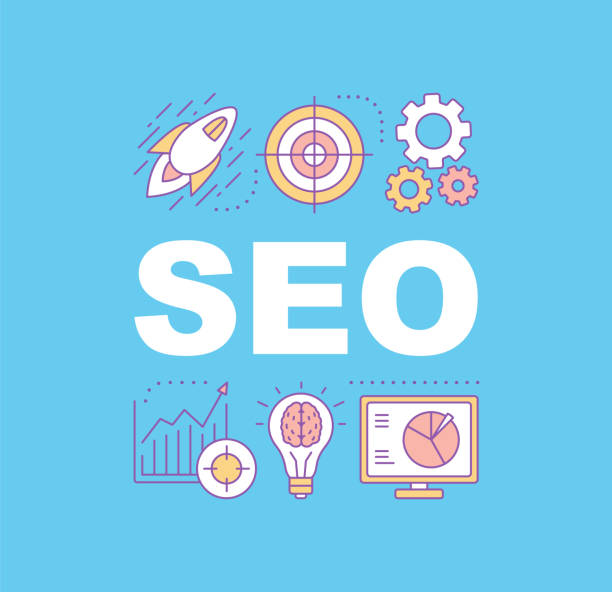What is Technical SEO and Why Does It Matter?

What is Technical SEO and Why Does It Matter?
#Technical SEO is the foundation of a successful website.
Unlike On-Page and Off-Page SEO, which focus on content and link building, Technical SEO addresses the technical aspects of a website that affect crawlability, indexability, and ranking by search engines like Google.
A website with strong Technical SEO helps search engines easily find, understand, and index the site’s content.
This leads to an increase in the site’s ranking in search engine results pages (SERPs) and ultimately increases organic traffic.
The importance of Technical SEO is very high in today’s competitive world.
Google and other search engines are constantly updating their algorithms and placing more emphasis on the speed, usability, and user experience of websites.
If your website is not technically optimized, even with excellent content and strong backlinks, you may not be able to achieve a good ranking in search results.
By doing proper Technical SEO, you can ensure that your website is optimized for search engines and increase your chances of attracting organic traffic.
In other words, Technical SEO is a #process that ensures your website is technically accessible, understandable, and indexable for search engines.
This includes actions such as optimizing site speed, creating a sitemap, fixing crawl errors, optimizing URL structure, and more.
Improving Technical SEO can lead to improved site rankings, increased organic traffic, improved user experience, and increased conversion rates.
How much does it cost you to lose business leads due to an unprofessional site? Solve this problem forever with professional corporate website design by Rasaweb!
✅ Increase the credibility and trust of potential customers
✅ Easier attraction of new business leads
⚡ Get free advice now!
Most Important Technical SEO Factors in 2024

Most Important Technical SEO Factors in 2024
In 2024, the focus of Technical SEO is on improving user experience and ensuring content is indexed correctly by search engines.
The most important factors are:
- Site Speed: Website page loading speed is one of the most important ranking factors.
Users expect web pages to load quickly, and delays in loading can lead to leaving the site and reducing the ranking in search results.
You can use tools like Google PageSpeed Insights to check your site speed. - Mobile-Friendliness: Given the increasing use of mobile phones, mobile-friendliness of the website is of high importance.
Your website should be designed to be easily displayed on mobile devices and users can easily interact with it. - URL Structure: The URL structure of your website should be simple, understandable, and relevant to the content of the page.
Avoid using long and complex URLs and try to use relevant keywords in the URL. - Sitemap: A sitemap is an XML file that introduces all the pages of your website to search engines.
Creating a sitemap helps search engines easily find and index the pages of your website. - SSL Certificate: SSL certificate ensures the security of your website and assures users that their information is protected during transmission.
Installing an SSL certificate is essential for every website. - Structured Data (Schema Markup): Structured data helps search engines better understand the content of your website.
Using structured data, you can show important information such as product prices, user ratings and reviews to search engines.
By focusing on these factors, you can improve your website’s Technical SEO and improve your ranking in search results.
Optimizing Site Speed: Solutions and Tools

Optimizing Site Speed: Solutions and Tools
Site speed is a critical factor in Technical SEO.
Users and search engines both like faster websites.
A slow website can lead to higher bounce rates, reduced search engine rankings, and lost customers.
To optimize site speed, you can use the following solutions:
- Optimize Images: Large and unoptimized images can significantly reduce the loading speed of website pages.
Use compressed formats such as JPEG and WebP and optimize images before uploading to the website. - Enable Browser Caching: Browser caching helps users load pages faster the next time they visit your website.
- Use a CDN: A CDN, or content delivery network, stores your website’s content on different servers around the world.
This allows users to receive content from the server closest to them and increases page loading speed. - Reduce HTTP Requests: The more HTTP requests sent to load a website page, the longer it will take to load.
By combining CSS and JavaScript files and removing unnecessary elements, you can reduce the number of HTTP requests.
There are various tools for checking and optimizing site speed, including:
By using these tools and implementing the mentioned solutions, you can optimize your website speed and improve user experience.
To better understand the impact of site speed on SEO, a table is provided below:
| Loading Speed (seconds) | Impact on Bounce Rate | Recommendation |
|---|---|---|
| 1-3 | Minimal | Excellent |
| 3-5 | Moderate | Acceptable, but needs improvement |
| 5-7 | High | Needs serious optimization |
| 7+ | Very High | Unacceptable, must be optimized quickly |
This table shows that the higher the site loading speed, the higher the bounce rate.
This can have a negative impact on your site’s ranking.
Therefore, optimizing site speed is an important priority for every website.
For SEO improvement, it is better to have a suitable site loading speed.
The Importance of Mobile-Friendliness and Responsive Design

The Importance of Mobile-Friendliness and Responsive Design
With the increasing use of mobile phones for browsing the internet, mobile-friendliness of the website has become a necessity.
Google also prioritizes websites that are optimized for mobile and ranks them higher in search results.
A mobile-friendly website should be designed to be easily displayed on mobile devices and users can easily interact with it.
Responsive Design is one of the best methods for creating a mobile-friendly website.
Responsive design allows the website to automatically adapt to the screen size of the user’s device.
In other words, your website will be displayed correctly on any device (mobile phone, tablet, laptop, etc.).
Benefits of Mobile-Friendliness and Responsive Design:
- Improved User Experience: Users can easily navigate your website and access the information they need.
- Increased Ranking in Search Results: Google prioritizes mobile-friendly websites.
- Reduced Bounce Rate: Users are more likely to stay on mobile-friendly websites.
- Increased Conversion Rate: Users can more easily make purchases or fill out forms on your website.
To check the mobile-friendliness of your website, you can use the Google Mobile-Friendly Test tool.
SEO is improved by properly optimizing the site for mobile phones.
Are you unhappy with the low conversion rate of visitors to customers on your online store?
Solve this problem forever with professional online store website design by Rasaweb!
✅ Increase visitor-to-customer conversion rate
✅ Create an excellent user experience and gain customer trust
⚡ Get free advice
Optimized URL Structure: Tips and Best Practices

Optimized URL Structure: Tips and Best Practices
The URL structure of your website plays an important role in SEO.
Optimized URLs help search engines better understand the content of your website pages and also help users easily navigate your website.
Tips and best practices for creating an optimized URL structure:
- Use Relevant Keywords: Use keywords relevant to the page content in your URLs.
- Keep URLs Short and Descriptive: Avoid long and complex URLs and try to keep URLs as short and descriptive as possible.
- Use Hyphens (-) Instead of Underscores (_): Google recognizes hyphens as word separators, while it considers underscores as part of the word.
- Use Lowercase Letters: It is better to use lowercase letters in URLs to avoid problems in address recognition by the server.
- Use Structured URLs: By using structured URLs, you can show search engines how your website pages are related to each other.
For example, you can use the following URLs to categorize your products: /products/electronics/laptops
Example of an optimized URL: /blog/seo-technical-guide
Example of a non-optimized URL: /page?id=123&category=456
In SEO, the address of pages is of particular importance.
The Importance and How to Create a Sitemap

The Importance and How to Create a Sitemap
A sitemap is an XML file that introduces all the pages of your website to search engines.
Creating a sitemap helps search engines easily find and index the pages of your website, especially if your website is large and complex or has few internal links.
A sitemap acts as a roadmap for search engines and shows them which pages are important and how they are related to each other.
How to Create a Sitemap:
- Using Online Tools: There are various online tools that help you easily create your website’s sitemap.
Some of these tools are: - Using WordPress Plugins: If you are using WordPress, you can use various plugins to create a sitemap, such as:
- Yoast SEO
- Rank Math
After creating the sitemap, you must register it in Google Search Console so that Google is aware of its existence.
Benefits of Using a Sitemap:
- Improved Indexing of Website Pages: Search engines can easily find and index your website pages.
- Increased Speed of Indexing New Pages: Search engines can index new pages of your website faster.
- Prioritizing Pages: You can show search engines which pages of your website are more important.
Below is an example of the structure of a simple XML sitemap:
<?xml version="1.0" encoding="UTF-8"?>
<urlset xmlns="http://www.sitemaps.org/schemas/sitemap/0.9">
<url>
<loc>https://example.com/</loc>
<lastmod>2023-10-27T10:00:00+00:00</lastmod>
<priority>1.0</priority>
</url>
<url>
<loc>https://example.com/about/</loc>
<lastmod>2023-10-26T14:30:00+00:00</lastmod>
<priority>0.8</priority>
</url>
<url>
<loc>https://example.com/contact/</loc>
<lastmod>2023-10-25T09:15:00+00:00</lastmod>
<priority>0.5</priority>
</url>
</urlset>
This example includes three pages with different addresses.
The `<loc>` tag specifies the page address, the `<lastmod>` tag shows the date of the last page update, and the `<priority>` tag determines the priority of the page compared to other pages on the site.
The `priority` value can be between 0.0 and 1.0, with 1.0 being the highest priority.
Registering a sitemap helps SEO.
Website Security with SSL Certificate

Website Security with SSL Certificate
An SSL (Secure Sockets Layer) certificate is a security protocol that encrypts communication between the user’s browser and the website’s server.
This prevents information exchanged between the user and the website (such as passwords, credit card information, etc.) from being stolen by hackers.
Installing an SSL certificate is essential for every website, especially for websites that collect sensitive user information.
Benefits of Using an SSL Certificate:
- Increased Security: User information is encrypted during transmission and protected from theft.
- Improved Ranking in Search Results: Google prioritizes websites that use an SSL certificate.
- Increased User Trust: The green lock icon in the browser’s address bar shows users that your website is secure and they can trust it.
- Compliance with Security Standards: Installing an SSL certificate helps you comply with various security standards such as PCI DSS.
How to Install an SSL Certificate:
- Purchase an SSL Certificate: You can purchase an SSL certificate from various SSL certificate providers.
- Install the SSL Certificate: After purchasing the SSL certificate, you must install it on your website server.
How to install the SSL certificate depends on the type of server and your control panel. - Enable HTTPS: After installing the SSL certificate, you must configure your website to use the HTTPS protocol.
The following table lists some types of SSL certificates and their features:
| SSL Certificate Type | Identity Verification | Suitable For |
|---|---|---|
| Domain Validation (DV) | Domain Ownership Verification | Personal websites and blogs |
| Organization Validation (OV) | Organization Identity Verification | Commercial websites and companies |
| Extended Validation (EV) | Detailed Organization Identity Verification | Online store websites and financial institutions |
This table shows that SSL certificates are offered with different levels of identity verification.
EV certificates offer the highest level of identity verification and give users more confidence.
If you want to do something for site SEO, ensure the security of your site.
Using Structured Data (Schema Markup)

Using Structured Data (Schema Markup)
Structured data (Schema Markup) are codes that help search engines better understand the content of your website.
By using structured data, you can show important information such as product prices, user ratings and reviews, business hours, address, and phone number to search engines.
This allows search engines to show users more accurate information in search results and, as a result, increase your website’s click-through rate (CTR).
Types of Structured Data:
- Product: To display product-related information (price, availability, rating, etc.).
- Review: To display user reviews about products or services.
- Event: To display event-related information (date, time, location, etc.).
- Organization: To display information about organizations (address, phone number, logo, etc.).
- Article: To display information about articles (title, author, publication date, etc.).
How to Use Structured Data:
- Choose the Right Type of Structured Data: Choose the type of structured data that matches the content of your page.
- Add Structured Data Code to the Page: You can add the structured data code manually to the page or use WordPress plugins.
- Test the Structured Data Code: After adding the structured data code, you must test it using the Google Rich Results Test tool to make sure it has been implemented correctly.
By using structured data, you can help search engines better understand the content of your website and improve your website’s ranking in search results.
Optimizing structured data has a direct impact on SEO.
Are you disappointed with the low conversion rate of your online store website? Rasaweb transforms your online store website into a powerful tool for attracting and converting customers!
✅ Significant increase in visitor-to-buyer conversion rate
✅ Exceptional user experience to increase customer satisfaction and loyalty⚡ Get free advice from Rasaweb!
Optimizing Crawl Errors

Optimizing Crawl Errors
Crawl Errors are errors that occur when search engines crawl your website.
These errors can prevent your website pages from being indexed by search engines and, as a result, reduce your website’s ranking in search results.
Optimizing crawl errors is an important aspect of Technical SEO.
If SEO is important to you, pay attention to this issue.
Types of Crawl Errors:
- 404 Not Found: This error indicates that the requested page was not found.
- 500 Internal Server Error: This error indicates that an internal error has occurred on the server.
- 301 Moved Permanently: This error indicates that the page has been permanently moved to another address.
- 302 Found (Moved Temporarily): This error indicates that the page has been temporarily moved to another address.
How to Find and Fix Crawl Errors:
- Using Google Search Console: Google Search Console is a tool that helps you find crawl errors on your website.
- Fixing 404 Errors: To fix 404 errors, you can use a 301 redirect to direct users to another page.
- Fixing 500 Errors: To fix 500 errors, you should contact your server administrator to fix the problem.
- Using Redirects Correctly: Use redirects correctly and avoid creating redirect chains.
By optimizing crawl errors, you can help search engines fully and correctly index your website and improve your website’s ranking in search results.
Checking and fixing these errors helps your site’s SEO.
Monitoring and Measurement: Technical SEO Analysis Tools

Monitoring and Measurement: Technical SEO Analysis Tools
Monitoring and measuring the performance of your website’s Technical SEO is essential to ensure the effectiveness of your efforts and identify opportunities for improvement.
There are various tools for analyzing Technical SEO that help you monitor your website’s performance in various areas such as speed, mobile-friendliness, page indexing, and more.
Some Technical SEO Analysis Tools:
- Google Search Console: This free tool from Google provides valuable information about how your website is performing in search results.
- Google Analytics: This free tool from Google provides detailed information about your website traffic.
- GTmetrix: This tool helps you check your website speed and receive tips for improving it.
- SEMrush: This paid tool offers a wide range of SEO tools, including Technical SEO analysis tools.
- Ahrefs: This paid tool offers powerful tools for analyzing your backlinks and competitors.
Using these tools, you can:
- Monitor your website’s performance over time.
- Identify technical problems on your website.
- Identify opportunities to improve Technical SEO.
- Evaluate the impact of Technical SEO changes.
In general, there are many tools for optimizing SEO.
Frequently Asked Questions
| Question | Answer |
|---|---|
| What is SEO? | SEO, or Search Engine Optimization, is the process of increasing the quality and quantity of website traffic by improving the site’s ranking in the natural (organic) results of search engines such as Google. |
| What are the main types of SEO? | SEO is divided into three main categories: On-Page SEO, Off-Page SEO, and Technical SEO. |
| What does On-Page SEO include? | On-Page SEO includes optimizing elements within the website, such as keywords, page title (Title Tag), meta descriptions (Meta Description), content, URL structure, images, and internal links. |
| What is Off-Page SEO? | Off-Page SEO refers to activities outside the website that help improve its ranking, such as Backlink Building, Social Media Marketing, and Brand Mentions. |
| What is Technical SEO? | Technical SEO focuses on optimizing the technical aspects of the website to help search engines crawl and index it better. This includes site speed, mobile-friendliness, site structure, sitemaps, and the Robots.txt file. |
| What role do Keywords play in SEO? | Keywords are terms that users enter into search engines. Using relevant and targeted keywords in the content and site elements helps search engines understand the topic of your page and display it in relevant searches. |
| What is a Backlink and why is it important? | A backlink, or inbound link, is a link from one website to another. Backlinks act as a “vote of confidence” from other sites for search engines and play an important role in the credibility and ranking of the site, especially if they are from reputable sites. |
| How does quality content affect SEO? | Quality, relevant, comprehensive, and unique content not only attracts and retains users but also shows search engines that your page is valuable. This helps improve ranking, reduce Bounce Rate, and increase the amount of time users spend on the site. |
| Why is site loading speed important for SEO? | Site loading speed is an important ranking factor for Google. Faster sites provide a better user experience, have a lower bounce rate, and are preferred by search engines. |
| Is SEO a one-time process? | No, SEO is a continuous and long-term process. Search engine algorithms are constantly changing, competition is increasing, and site content needs to be updated. Therefore, SEO requires continuous monitoring, analysis, and optimization. |
And other services of Rasa Web advertising agency in the field of advertising
Smart link building: A combination of creativity and technology to attract customers through dedicated programming.
Smart direct marketing: An exclusive service to grow user engagement based on smart data analysis.
Smart content strategy: A fast and efficient solution for digital branding with a focus on smart data analysis.
Smart digital branding: A combination of creativity and technology for online growth through attractive user interface design.
Smart Marketplace: A creative platform to improve customer acquisition with smart data analysis.
And more than hundreds of other services in the field of internet advertising, advertising consulting, and organizational solutions
Internet advertising | Advertising strategy | Advertorial
Resources
Technical SEO Training on Aparat
,What is Technical SEO?
,Complete Guide to Technical SEO
,What is Technical SEO and Why Does It Matter?
? At Rasaweb Digital Marketing Agency, your digital dreams come true with our expertise. From professional SEO optimization to secure website design and creative advertising campaigns, we are your partner in the digital world.
📍 Tehran, Mirdamad Street, next to the Central Bank, South Kazerun Alley, Ramin Alley, No. 6



